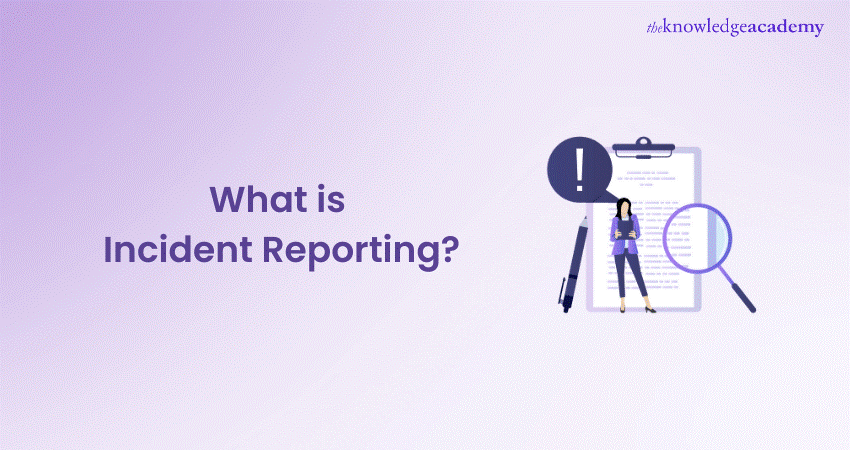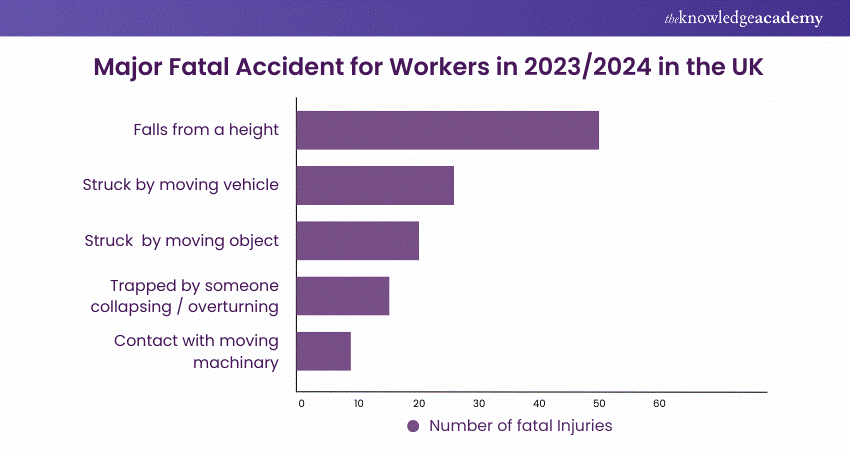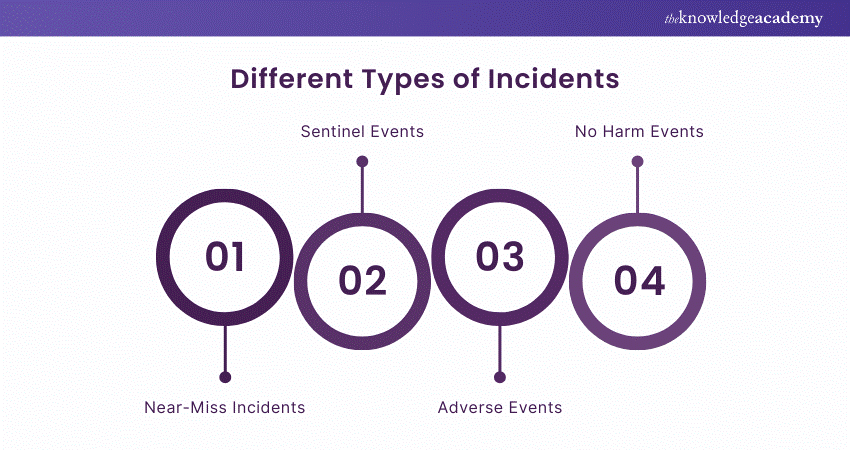We may not have the course you’re looking for. If you enquire or give us a call on +43 720 115337 and speak to our training experts, we may still be able to help with your training requirements.
Training Outcomes Within Your Budget!
We ensure quality, budget-alignment, and timely delivery by our expert instructors.

Incident reporting is the process of documenting unexpected events, accidents, or near-misses that may impact safety, operations, or compliance. It ensures transparency, helps identify risks, and allows organisations to take corrective actions to prevent similar incidents in the future. Whether it’s a workplace injury, equipment failure, or data breach, incident reporting plays a vital role in promoting accountability and safety.
Timely and accurate incident reports are essential for risk management and regulatory compliance. Modern organisations often use digital tools to streamline reporting, improve communication, and gain real-time insights. This blog provides a complete overview of incident reporting, covering its importance, benefits, and best practices to help businesses develop effective incident management systems.
Table of Contents
1) What is Incident Reporting?
2) The Importance of Incident Reporting
3) Different Types of Incidents
4) How to Write an Incident Report?
5) Advantages of Incident Reporting
6) Conclusion
What is Incident Reporting?
Incident reporting involves documenting the facts and details of workplace accidents, injuries, or risky situations. It provides a clear account of the chronological events leading up to the incident and includes a thorough analysis of actions to prevent recurrence. Any employee can complete an incident report as a witness or someone directly involved. All documentation is typically reviewed and promptly filed for future reference.

Organisations acquire useful insights into workplace dangers, trends, and possible risks by consistently recording incidents. This process helps them to address underlying problems, enforce preventive measures, and improve safety protocols. Ultimately, Incident Reporting helps cultivate a culture of accountability and constant improvement, assuring safer conditions for workers and stakeholders.
The Importance of Incident Reporting
Incident Reporting is more than a formality; it improves workplace safety and operational efficiency. Organisations can recognise risks, control forthcoming happenings, and make a custom of responsibility and constant improvement by recording incidents. Here are the key reasons why incident reporting is essential:
1) Creating a Dependable Reporting Framework
A strong Incident Reporting system guarantees that all workplace mishaps or near-misses are comprehensively documented. Creating a reliable framework involves setting clear protocols for what needs to be reported and encouraging employees to submit reports without fear of retaliation. A well-structured framework is the basis for recognising patterns and making data-driven safety improvements.
2) Pinpointing Root Causes and Applying Preventive Measures
Incident reports aren’t just about what happened—they delve into why an incident occurred. Recognising root causes helps organisations implement preventive steps, reducing the probability of recurrence. Root cause analysis is integral to turning Incident Reporting from a reactive process into a proactive approach that enhances workplace safety.
3) Raising Awareness and Cultivating a Proactive Work Environment
One noteworthy benefit of Incident Reporting is increasing awareness about potential dangers. When employees see that their reports lead to substantial changes, they are more likely to be vigilant and proactive about safety. This proactive culture greatly decreases risk and facilitates a more secure workplace.
4) Ensuring Compliance with Regulatory Standards
Incident Reporting plays an important part in maintaining adherence with regulatory standards. Regulatory bodies often mandate reporting workplace incidents, particularly in high-risk industries. A well-maintained reporting approach assures that your organisation stays compliant and can deliver documented evidence in case of an audit or review.
5) Boosting Transparency and Improving Risk Assessment
Reporting incidents improves organisational transparency by clearly recording workplace safety trends. This transparency allows managers and safety officers to assess risks more accurately and take targeted actions to mitigate them, thus improving the organisation's overall safety and risk management.
Protect your organisation from threats—join our Fraud Analytics Training now!
Different Types of Incidents
Understanding the different types of incidents is essential for effective Incident Reporting and risk management. Each type, from near-misses to adverse events, provides valuable insights into potential hazards and areas for improvement in workplace safety. Here are the Different Types of Incidents:

1) Sentinel Events
A sentinel event is a serious, shocking incident that consequences in severe harm or death. These incidents often signal significant systemic issues and require immediate investigation and corrective action. They serve as a wake-up call for organisations to scrutinise their procedures and mitigate future risks.
2) No Harm Events
No-harm events occur when an incident occurs, but no one is injured or adversely affected. While no harm is done, these events are still critical to report as they indicate underlying risks that could lead to future problems if not addressed.
3) Near-miss Incidents
Near-miss incidents are situations where an accident almost happened but was avoided at the last minute. Although no injury or damage occurs, near-misses are vital to report as they reveal vulnerabilities in the system that need attention.
4) Adverse Events
Adverse events are incidents where unintended harm occurs, though not severe enough to be classified as a sentinel event. These events can involve injury or property damage and often highlight areas where safety protocols failed, prompting corrective actions.
How to Write an Incident Report?
Employees might receive training on how to write incident reports or be provided with templates that cover all necessary details. Incident reports should be promptly and accurately completed, ensuring all details are included. Here are the steps for writing and submitting an incident report:
1) Acquire the Incident Report Form
Check your company’s incident reporting guidelines to find out where you can access the necessary forms. Type out your report for better clarity, though some workplaces may still allow handwritten forms. HR or another designated person may type it up for official records if it is handwritten.
2) Complete the Form with Necessary Details
Incident report forms usually have a clear template indicating what information to include and where. If a template isn’t unavailable, provide detailed information about the incident. Your report should typically include:
a) Date, location, and time of the incident
b) Your name or employee identification, if required
c) Names of employees' present
d) What you saw
e) What you experienced
f) Contributing factors
3) Submit the Completed Report
After completing the incident report form, double-check all the information for accuracy. Promptly completing the form after the incident helps ensure your memory is fresh and details are accurate. Submit the form according to your company’s policy or guidelines.
Prepare your team to handle threats effectively—sign up for our Incident Response Training today!
Advantages of Incident Reporting
Incident Reporting offers numerous advantages that go beyond simple documentation. From enhancing communication and transparency to fostering continuous improvement, it plays a vital role in creating a safer and more proactive work environment.
1) Effective Communication of Hazards and Risks
Incident Reporting fosters better communication about potential hazards and risks within an organisation. By documenting and sharing this information, employees become more aware of their surroundings and can take steps to minimise risks in the future.
2) Continuous Improvement of Processes
Each report contributes to the organisation’s ability to improve its processes. By analysing trends from various reports, management can identify areas of weakness and implement continuous improvements in safety protocols, equipment, or training.
3) Reinforcement of Immediate Action
Incident Reporting demands immediate action to address and rectify the situation. This prompt response ensures that the specific issue is resolved and sends a clear message that safety is a top priority in the organisation.
Conclusion
In any workplace, understanding What is Incident Reporting is important for creating a safer, more transparent, and foresighted setting. Incident Reporting goes farther than ticking the box—it helps organisations recognise dangers, control future issues, and comply with regulatory norms. By fostering a culture of continuous improvement, Incident Reporting ensures that every occurrence becomes a steppingstone towards a safer future.
Unlock the skills to identify and neutralise cyber threats—join our Malware Analysis Training today!
Frequently Asked Questions

The five key rules of Incident Reporting are:
1) Report the incident as soon as possible.
2) Be factual and objective.
3) Have all important details like time, date, location, and individuals involved.
4) Ensure confidentiality by not sharing the report with unauthorised personnel.
5) Submit the report through the appropriate channels for timely review.

An incident report should not include assumptions, personal opinions, or emotional language. It should also avoid placing blame or making accusations. Only the information that can be verified should be included, such as what was observed, who was involved, and any direct consequences of the incident.

The Knowledge Academy takes global learning to new heights, offering over 30,000 online courses across 490+ locations in 220 countries. This expansive reach ensures accessibility and convenience for learners worldwide.
Alongside our diverse Online Course Catalogue, encompassing 19 major categories, we go the extra mile by providing a plethora of free educational Online Resources like News updates, Blogs, videos, webinars, and interview questions. Tailoring learning experiences further, professionals can maximise value with customisable Course Bundles of TKA

The Knowledge Academy’s Knowledge Pass, a prepaid voucher, adds another layer of flexibility, allowing course bookings over a 12-month period. Join us on a journey where education knows no bounds.

The Knowledge Academy offers various Cyber Security Training, including the Incident Reporting Training, Incident Response Training, and Fraud Analytics Training. These courses cater to different skill levels, providing comprehensive insights into What is Computer Forensics?
Our IT Security & Data Protection Blogs cover a range of topics related to Data Protection, offering valuable resources, best practices, and industry insights. Whether you are a beginner or looking to advance your IT Security skills, The Knowledge Academy's diverse courses and informative blogs have got you covered.
Upcoming IT Security & Data Protection Resources Batches & Dates
Date
 Incident Reporting Training
Incident Reporting Training
Fri 29th Nov 2024
Fri 20th Dec 2024
Fri 21st Feb 2025
Fri 25th Apr 2025
Fri 20th Jun 2025
Fri 22nd Aug 2025
Fri 17th Oct 2025
Fri 19th Dec 2025







 Top Rated Course
Top Rated Course



 If you wish to make any changes to your course, please
If you wish to make any changes to your course, please


